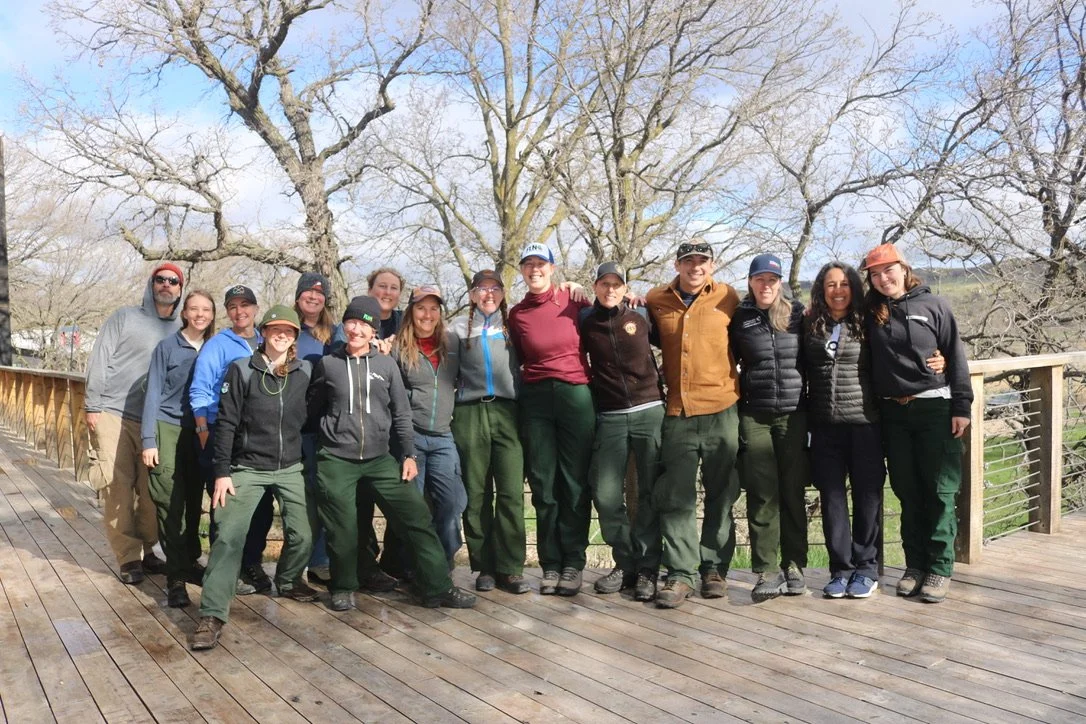Editor’s Note: This article was originally published as a guest post for the Fire Adapted Communities Network (FAC Net) blog, and can be found here.
By Becca Shively - Program Manager, Rural Voices for Conservation Coalition
Becca Shively is a Program Manager for Rural Voices for Conservation Coalition and is based in Portland, Oregon. She has a background in federal forest policy and public lands management, and has worked for various agencies in the U.S. Department of Agriculture and the City of Portland. Here, Becca shares reflections on a recently completed project looking at what might help scale-up the use of cooperative burn partnerships between nonprofits and the Forest Service in order to accomplish more prescribed fire across the West.
The Background
For the past year I’ve led a project for Rural Voices for Conservation Coalition (RVCC) intended to facilitate cooperative burn partnerships between nonprofit organizations and the Forest Service. While cooperative burning is by nature a more expansive practice involving many sectors and partners, there were several reasons why we hoped to focus on the specific dynamics between these two entities. Nonprofits can face unique challenges in fire work, and have fewer resources and systems available to them than other partner types. They also offer a wealth of local expertise, community engagement potential, and workforce capacity at a time when the Forest Service, and the West, urgently needs to expand its qualified workforce to address our worsening wildfire crisis. It was with these considerations in mind that we embarked on a project to understand the successful strategies that have allowed cooperative burn partnerships to gain traction and propose solutions or agency reforms that would address the most common barriers slowing or preventing their adoption.
The Process
We collected, analyzed and compared 20 executed cooperative burn agreements between nonprofits and the Forest Service. We also interviewed 67 different nonprofit prescribed fire practitioners, agency staff and partners in other sectors about their experiences with federal burn partnerships (once we started, it was hard to stop).
We sought to:
Gauge the abundance of cooperative burn partnerships between nonprofits and the Forest Service;
Learn how those partnerships are codified through federal agreement instruments;
Clarify agency practices and policies, and nonprofit strategies related to fireline qualifications, credentialing and liability; and lastly
Understand nonprofit and agency perceptions of each other.
The Take-home
The Process
We collected, analyzed and compared 20 executed cooperative burn agreements between nonprofits and the Forest Service. We also interviewed 67 different nonprofit prescribed fire practitioners, agency staff and partners in other sectors about their experiences with federal burn partnerships (once we started, it was hard to stop).
We sought to:
Gauge the abundance of cooperative burn partnerships between nonprofits and the Forest Service;
Learn how those partnerships are codified through federal agreement instruments;
Clarify agency practices and policies, and nonprofit strategies related to fireline qualifications, credentialing and liability; and lastly
Understand nonprofit and agency perceptions of each other.
The Take-home
What we found in many ways confirmed our original sense of the challenges facing nonprofits in this work. We also clarified the role the agency might play in improving prescribed fire partnership opportunities. We were both encouraged and disheartened by our findings, but ultimately continue to see immense opportunity to expand cooperative burn partnerships through specific steps. To summarize this work we created two products that are available now on the RVCC website – a set of case studies highlighting three nonprofit organizations’ pathways to developing their own prescribed fire capacity and cultivating federal partnerships; and a full report that outlines our key findings, barriers faced and proposed recommendations about cooperative burning in the western U.S.
Here’s a quick download of some key project takeaways:
The Hard Truths
Cooperative burn partnerships between nonprofits and the Forest Service aren’t as abundant as we had hoped. In fact, we didn’t uncover any partnerships that we were not already aware of. In addition, some of the most impactful barriers cited by nonprofit interviewees had no easy solutions, such as:
The agency’s suppression-oriented structure and culture, which can exclude nonprofits from being viewed as credible partners;
A lack of agency incentives to invest the resources and time required to develop and maintain partner relationships;
Limited and poor options for nonprofits to track and certify fireline qualifications; and
The scarcity of private prescribed fire insurance, sometimes causing nonprofits to withdraw from prescribed fire implementation work altogether.
The Good News
Partnerships lay fertile ground. Despite the scarcity of formal cooperative burn partnerships in the West, the ones that do exist provide far greater impact and engagement. For example, several nonprofits we interviewed use their federal agreements to engage other community organizations as volunteers or agents of their work, fostering dispersed, multi-organization fire crews and planting seeds for future “formal” agency partners. We also identified several agency sparkplugs, including almost all regional fuels managers we interviewed, who were true believers in the impact of partnerships and were supportive of promoting cooperative burning. Finally, we found grants and agreements staff to be very open to clarifying and improving agreement processes and welcomed the opportunity to hear feedback from partners. Overall, there seemed to be a great deal of agreement between both the nonprofit and agency interviewees about the barriers they see to cooperative burn partnerships, suggesting a solid, agreed upon foundation to advance solutions.
What’s Next for this Work?
RVCC will continue to work with partners like FAC Net, The Nature Conservancy, Fire Learning Network (FLN) and our coalition partners to promote an inclusive, collective action approach to meaningful wildfire risk reduction in the rural West, including cooperative burning strategies. With a better understanding of the potential and the limitations of cooperative burn partnerships, we are positioned to prioritize needed solutions and bring these ideas to ongoing conversations about implementing the Infrastructure Investment and Jobs Act and the new Forest Service 10-year Wildfire Strategy.
In line with that goal, we hope you’ll join us on May 26 for a virtual RVCC Annual Meeting session, “Accelerating the Use of Prescribed Fire through Policy and Partnerships,” co-facilitated by Dr. Courtney Shultz (Colorado State University) and Nick Goulette (Watershed Research and Training Center). In this session we’ll vet the findings and recommendations of several aligning prescribed fire projects, including this one, and co-create a framework of policy priorities that will support cooperative burning and partnership-driven prescribed fire implementation. Registration is open – we hope to see you there!
Note: RVCC’s cooperative burn partnership report and case studies were made possible by generous support from The Nature Conservancy’s U.S. Natural Climate Solutions Accelerator Grant Program.





